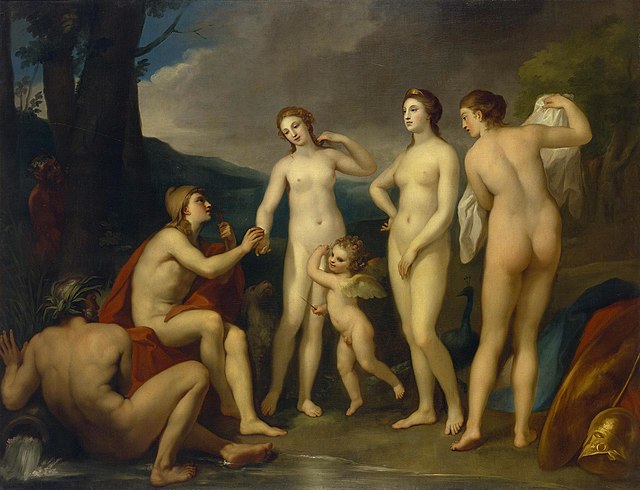The Empire style is an early-nineteenth-century design movement in architecture, furniture, other decorative arts, and the visual arts, representing the second phase of Neoclassicism. It flourished between 1800 and 1815 during the Consulate and the First French Empire periods, although its life span lasted until the late-1820s. From France it spread into much of Europe and the United States.
The Arc de Triomphe of the Place de l'Étoile, one of the most famous examples of Empire architecture, commissioned in 1806 after the victory at Austerlitz by Emperor Napoleon I
Detail of Arc de Triomphe du Carrousel from Paris, with a pair of winged Victories
A pair of sphinxes with an amphora between them, surrounded by rinceaux and palmettes, on a washstand (athénienne or lavabo)
The top of an Egyptian Revival pylon-shaped coin cabinet, with a cornice and a winged sun
Neoclassicism, also spelled Neo-classicism, emerged as a Western cultural movement in the decorative and visual arts, literature, theatre, music, and architecture that drew inspiration from the art and culture of classical antiquity. Neoclassicism was born in Rome, largely due to the writings of Johann Joachim Winckelmann during the rediscovery of Pompeii and Herculaneum. Its popularity expanded throughout Europe as a generation of European art students finished their Grand Tour and returned from Italy to their home countries with newly rediscovered Greco-Roman ideals. The main Neoclassical movement coincided with the 18th-century Age of Enlightenment, and continued into the early 19th century, eventually competing with Romanticism. In architecture, the style endured throughout the 19th, 20th, and into the 21st century.
Psyche Revived by Cupid's Kiss; by Antonio Canova; 1787; marble; 155 cm × 168 cm; Louvre
Charles Towneley in his sculpture gallery; by Johann Zoffany; 1782; oil on canvas; height: 127 cm, width: 102 cm; Towneley Hall Art Gallery and Museum, Burnley, UK
Johann Joachim Winckelmann, often called "the father of archaeology"
Anton Raphael Mengs; Judgement of Paris; circa 1757; oil on canvas; height: 226 cm, width: 295 cm, bought by Catherine the Great from the studio; Hermitage Museum, Saint Petersburg, Russia








